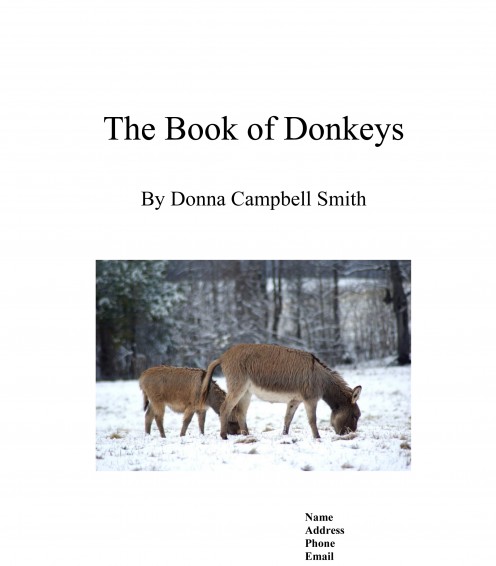Six Elements to Writing a Non-Fiction Book Proposal
Selling Your Idea
Selling a non-fiction book is different from selling a novel. The novel is written in its entirety before the author submits it to an agent or publisher. In the case of a non-fiction book, the book is sold before it is written. To sell your idea you must write a book proposal to present to prospective agents or publishers. I have broken the proposal down into six elements. Keep in mind there is more than one way to skin this cat. This is how I do it, but read prospective publisher's guidelines. They may want it done a specific, and different, way.
Sample Book Proposal Cover Page

Title Page
The title page is the first thing the editor or agent will see. Make it attractive. Start about one third down the page and type the book title in a normal font, like Times Roman or Courier, centered on the page. The size depends on the length of the title. I use 20-24 for most. I don't like for my titles to take more than two lines. Under the title I put my name in a smaller size. Use the same font throughout the proposal.
If you are also providing photographs for your book put one under the title. Be sure it is an example of your best work and follows the book's subject matter. Near the bottom right hand corner of the page type your contact info: name, address, phone numbers and email address.
Cover Letter
The cover letter should give an overview of the project. Include a brief synopsis, your qualifications for writing the book, and if you can provide illustrations or photographs. Tell the agent or editor how long you think it will take to complete the project.
Chapter-by-Chapter Synopsis
This can also be done in the form of a detailed outline, but I like writing a synopsis of each chapter. It depends on what sort of book you are writing or what the publisher's guidelines specify.
Market
Publishers are a business. They want to know how your book will earn money for them. This is a major key overlooked by some writers. This is your time to make a sales pitch, and it must be convincing. The first thing I do is a search on Amazon to see what and how many books have already been published on my subject. Then I look at the books to see how they are alike or different from what I want to do. I have to show the publisher or agent how my book is going to be unique from the rest. Next research numbers. Since I write about horses I need to know how many horse folk are out there, and then how many have an interest in the kind of horses that will be in my book. Are there other potential buyers who do not own horses? Why would they buy my book?
Author Resume
The resume should focus on your writing career with a list of writing credits, educational back ground and work experience. It should have information on those areas as they apply to your qualifications to write the book. In my case I have worked many years in the horse industry, the book is about horses, so I include that information. If you are writing a book with a historical background and you have a history degree or have worked in that field include that information.
Author Bio
When I first began to write my bio it was difficult for me. I had been raised that nice Southern girls didn't brag about themselves. Well, in your bio you have to toot your own horn. The first rule of thumb is to write this part of your proposal in third person. Include your writing credits, some personal information liked where you live and favorite hobbies.
Ask someone who is qualified to read over your proposal and look for errors. The book proposal is your interview. It is a reflection of your writing ability and talent. If it is sloppy it's not going to get a second look. You want this sample of your work to be perfect. Don't rush to put it together. Be sure to read the publisher or agent's guidelines and follow them to a tee. If they want an outline, then give them an outline. If they want chapters, write the chapters (usually the first three chapters is the most you'll have to write) and include them with your proposal.
Do your homework and research prospective publishers and agents. Only send the proposal to those who publish the type of book you are writing. Not all agents handle all books. They specialize. The Writer's Market, which is published annually, gives that information. Some of the bigger publishers won't look at a proposal unless it comes via an agent. You need to know that before you waste your postage. Most will accept proposals via email, some don't. When emailing the body of the email is your cover letter. Attach the proposal.
You can also learn in The Writer's Market names of the editors, whether or not the company pays an advance, how many books they publish in a year, and how to acquire their writer's guidelines.
If you are mailing your proposal do not staple it or bind it in anyway. Put the un-folded proposal in a large mailing envelope. Be prepared to wait a long time for a response. Some authors include a self-addressed postcard for the recipient to mail back just to show the package was received.
Writing Well
© 2008 Donna Campbell Smith









